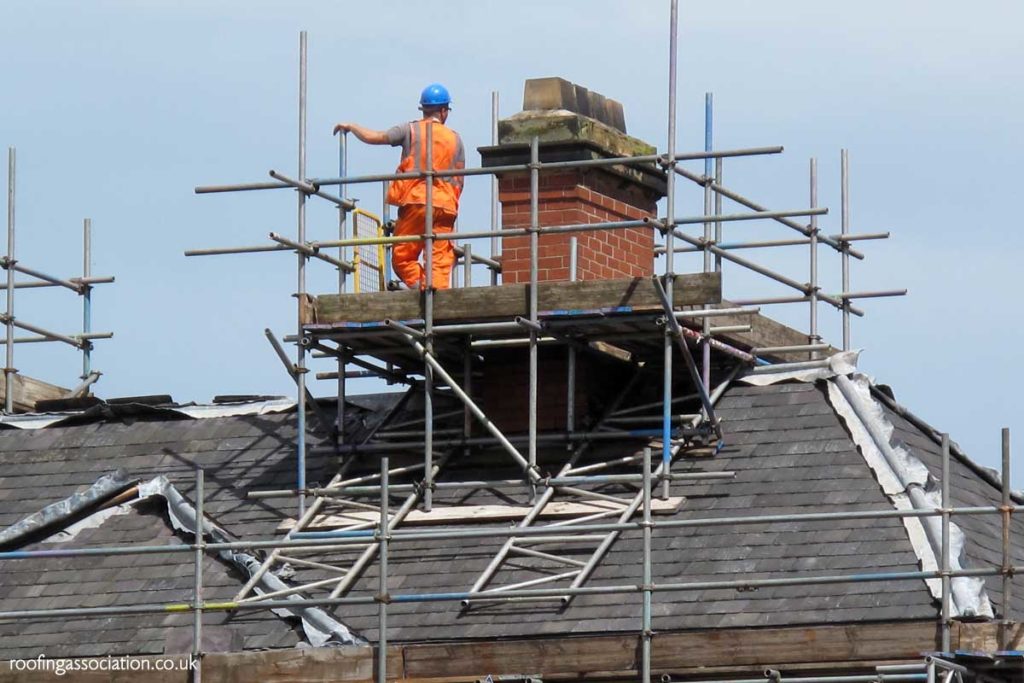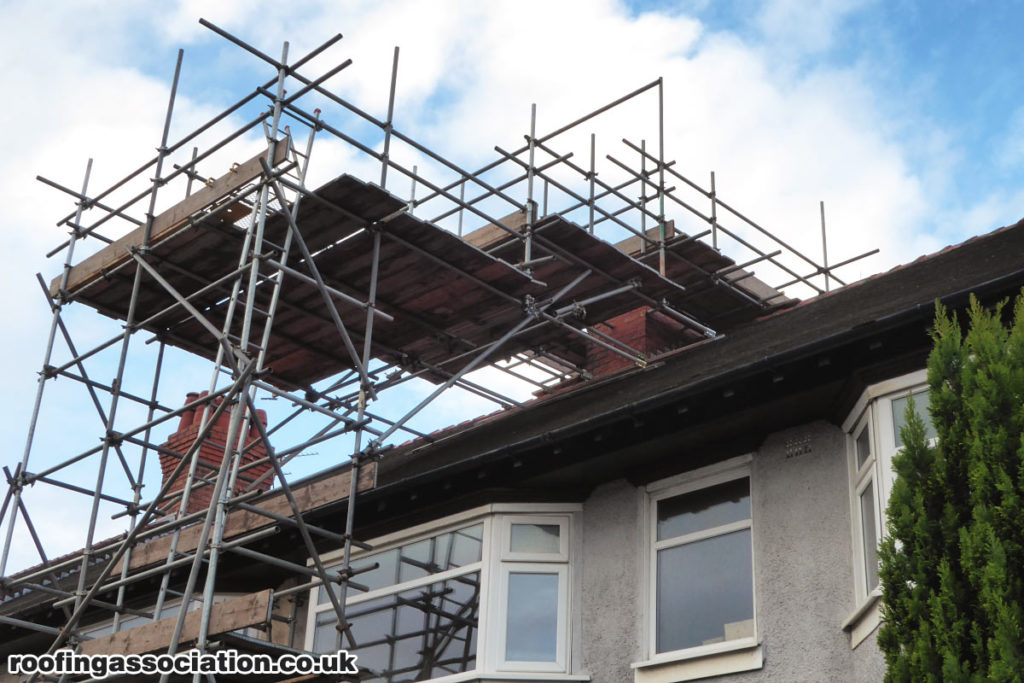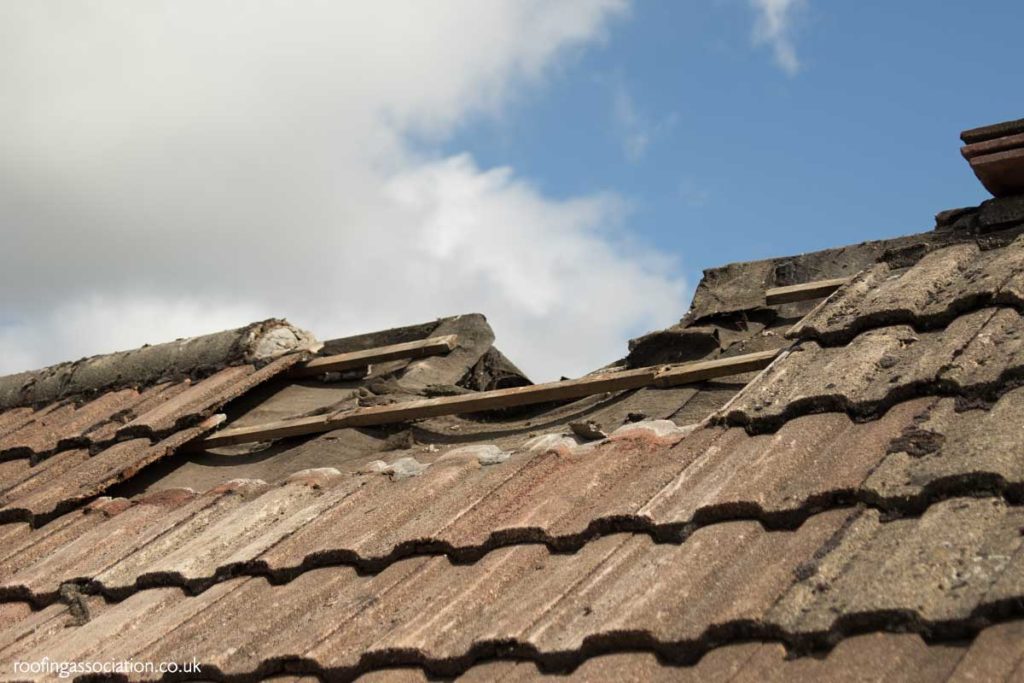If you are thinking about having a chimney removed, you are in the right place. It would be best if you carried out a bit of research into chimney removal cost and what to expect when the work is being carried out. Whether you are thinking about having your chimney removed because it’s damaged or dangerous or you want to make more space in your home, this guide will help you make an informed decision.
Unfortunately, having a chimney removed is not a straightforward as you might think. Make sure you take enough time to consider all of the ramifications of having a chimney removed. Although it may seem like the chimney is on your roof, it’s actually a structural part of your home. The chimney breast runs from the top to the bottom of your home.
If you want to remove a chimney breast in a room, you would have to make sure that the sections of chimney breast above are adequately supported to stop it collapsing. If you have no experience in removing chimneys, it is highly recommended that you consult a professional.

How Much Does it Cost to have a Chimney Removed in the UK?
The cost of a chimney removal will depend on the size of the chimney. Average chimney removal cost vary between £400 and £1000. The cost of hiring scaffolding would be extra. The time it takes to remove a chimney is usually between one and two days.
Here’s a Breakdown of Chimney Removal Costs
In the table below, you can get an idea of how much each job is likely to cost
Keep in mind that every job is different. The cost of a chimney breast removal is unique to each individual property. The easiest way to get an accurate quote for having a chimney breast removed is to get in touch with a reputable, local company. One thing to remember, if you live in London you should expect to pay more for a chimney removal, a roof repair or a roof replacement due to the higher cost of living in the capital.
Understanding how a chimney works
A chimney is made up of two separate parts.
- Chimney stack – when you look at a chimney from the outside of a property, all you can see is the chimney stack protruding from the roof. However, the chimneystack begins in the loft and emerges through the roof. If you are thinking about having the breast of your chimney removed, you will need to make sure that the remaining structure above has enough support.
- Chimney breast – you will see the breast of a chimney where the fireplace is located. The chimney breast begins at the hearth and continues through the rooms above until it reaches the base of the chimney stack in the loft.

How many different types of chimney removal are there?
Here are the four types of chimney removal:
- Remove a chimney stack: – the cost of having a chimney stack removed will depend on where about it is located on the roof, whether it is shared with a neighbour and its size. Chimney stack removal costs usually vary between £1000 and £1600.
- First-floor chimney breast removal – the cost of a chimney breast removal on the first floor of a three bed semi detached house would cost about £1500. The price should include having gallows brackets installed in the loft. It usually takes three days for two men to complete the work.
- Removing a chimney breast from the ground floor – the cost of having a chimney breast removed from a ground floor is around £1800. The job includes making sure the chimney breast in the room above is adequately supported. You should allow approximately four days for the work to be complete.
- Removal of an entire chimney breast – the average costs to have all of the chimney breast removed is about £2000. You should expect the work to take approximately five days to complete.
Planning procedures before having a chimney removed
It is possible to remove any part of the chimney without having to have the entire structure removed. You could remove the ground floor chimney breast from your living room and keep the chimney breast in the room above. You could have a chimney stack taken down off your roof, and it wouldn’t affect the rest of the structure. If you have any problem with a chimney stack or the chimney breast, it might be more cost-effective to have it removed. You will need to seek advice from a structural engineer before starting work.
Legal requirements
You must contact your local authority and notify them about your plans of having a chimney removed. If you live in a terraced or semi-detached house, there may be legal complications to take into account such as a party wall agreement.
If you live in a property that is a listed building, they usually have strict rules about making any modifications to the property.
Planning Permission and Building Regulations
In most cases, you don't need to have planning permission to have a chimney altered or replaced. Making alterations to a chimney falls under the permitted development category. However, you will still have to comply with a few requirements from your local authority. The best course of action is to contact your local authority before you start work, tell them about your plans, and find out what the rules are for where you live.
Any work that has to be carried out on the chimney will have to comply with UK building regulations. The regulations you need to follow will depend on the type of work you are having done. If you plan to have work done on an existing chimney or flue, you will have to make sure it complies with Approved Document J. You will also have to comply with structural integrity regulations. Structural integrity regulations are there to make sure that the work you have done does not affect certain parts of your home.
Party wall act 1996 – if you live in a terraced or semi-detached property, you'll have to make sure you have permission from your neighbour before going ahead with your plans.
Sound proofing – the walls, floors and ceiling will have to be soundproofed using the same thickness materials as the original.
Ventilation – to comply with part F2, they will need to be adequate ventilation in the room of at least 8000 mm².
Damp proofing – If you are removing the breast of a chimney from the ground floor, there is a risk of damaging the damp proofing.
Having plans drawn up and sending them to your local authority is the easiest way to show that you're trying to be compliant. Once you have submitted your plans, the next step would be to go to the competent Person scheme and hire a tradesman. Hiring a tradesman of the competent person scheme will actually reduce your costs by removing the building control fees. A Tradesman who belongs to the Competent Person scheme can sign off their own work rather than having to wait for a building control officer.
DIY or Hire a Professional?
Unless you are a trained professional, you should not attempt to remove your chimney. Having a chimney removed is a structural job, and you should consult a structural engineer before carrying out any work. Consulting a structural engineer will save you a lot of stress and money in the future. You will want to make sure that you will be getting a completion certificate from your local authority once the work is complete.
If you are confident in your skills to carry out the work yourself, you must keep the following in mind:
- Your own safety – you will need to make sure that you hire scaffolding to carry out the work safely. You must follow all of the health and safety guidelines. You will need appropriate work wear such as protective boots, overalls, eye protection, a quality dust mask and eye protection.
- Protect your property – a chimney removal creates a lot of dust and debris. Try to minimise the amount of dust and debris by sealing off the area in which you are working. You can use plastic sheeting or tarpaulin and tape to hold it in place.
Hiring a professional – if you are going to hire a builder to take down your chimney stack, you need to take the following steps:
Get at least three quotes. It is standard practice to get at least three quotes and compare them to make sure you’re not overpaying. Having three professional builders come to look your chimney will give you more insight into what is involved and what to expect. The builders assessing your property will likely bring things to your attention that you might not have considered. When you are talking to a builder, ask them for the following information:
- Ask the builder if they liaise with local authorities
- Ask if the removal of debris from your property is included within the quote
- check to see if they have public liability insurance in place
- ask what measures they are going to take to protect your home from dust and debris
- check if plastering, joinery and painting are included in the price after having a chimney breast removal

What type of work is involved in removing a chimney stack?
Below you will find a basic description of what is involved in the removal of a chimney and the breast of a chimney.
Chimney Stack Removal
The first step is to make sure that you have the correct permissions before starting work. If you live in a terraced or semi-detached property, you more than likely share your chimney with a neighbour. It would be wise to discuss what you plan to do with your chimney with your neighbour before you have it removed. Once you have come to an arrangement with your neighbour, you should start by taking the following steps.
- Have scaffolding erected with access to the chimney stack
- Remove the flaunching, chimney pots and cowls.
- Take the chimney stack apart brick by brick and lower them safely to the ground.
- Install new timbers, felt and tiles
- Safely dispose of all waste
It would take approximately six hours for two roofers to remove an average size chimney. To remove a larger chimney might take the best part of two working days.
Removing a Chimney Breast
If you are having the breast of your chimney removed from the ground floor and the first floor of your home you will have to make sure that you do the following:
- Make sure the chimney breast is removed from the floor up through the ceiling to at least 1 metre in the room above.
- Make sure the breast of the chimney in the loft is supported by installing gallows brackets under the chimney.
- Skim walls and install new skirting boards if necessary.
- Level the floor and make sure the hearth is in good condition
- carry out repairs to the ceiling if necessary
- Plaster the ceiling & walls
- dispose of the waste
Once the chimney stack has been removed, gallows brackets will be installed to support the remaining part of the stack. Although gallows brackets are perfectly fine to use in a loft, you might not want to use them if you are converting your loft into another room. You may want to consider using steel beams as an alternative way to support the remaining part of the chimney stack.
Finishing off
After the chimney has been removed, there will be additional work to take care of such as new flooring and decorating. Having a chimney removed can be a difficult job, but it is worth doing if it is causing problems within your home.
FAQ
Do I Need to Hire a Structural Engineer to have my Chimney Breast Removed?
If you remove the breast of a chimney, you are altering the structure of your house. You will have to install new support where possible. A structural engineer will be able to alter the structure of your home as well as presenting their calculations and plans to a building control officer. So the answer is yes, you do need a structural engineer to carry out the work to make sure your property is safe.
Am I Required to have a Party Wall Notice if I want to have a Chimney Breast Removed?
If you share a wall with a neighbour, you will have to make sure you stay compliant with the party wall act 1996. Removing bricks from a wall that you share with a neighbour would be failing to comply with the party wall act. If you have removed any bricks, you will have to make sure you put them back, and the wall is in the same condition before you made any changes. The correct procedure would be to serve your neighbour with the party wall notice. The notice will notify your neighbour of what you plan to do with your property. Seek legal advice from a solicitor before serving a party wall notice.
How do you Block the Hole Where the Fireplace was in the Chimney Breast?
There are two ways of blocking up the hole where the fireplace used to be. The first way is to use concrete blocks, and the second way is to use plasterboard. No matter which method you use, you have to make sure that you have fit an air vent; otherwise, you will have damp problems.
Installing a bird and rain guard cowl on the chimney pot will allow the chimney to breathe and increase airflow.
Is there a way to Block a Chimney Temporarily?
If you want to block a chimney temporarily, you can use a chimney balloon. You take the balloon out of the packaging, go to the fireplace opening and push it up into the flu. The next step is to inflate the balloon to the required pressure. Make sure you follow the manufacturer’s instructions before you fit the balloon. You have to have permanent airflow throughout the chimney. It would be a good idea to fit a 50 mm plastic waste pipe down the side of the balloon. If you ever decide that you want to use the chimney again, don’t forget to remove the balloon.
Is a Chimney Breast Structural?
The breast of a chimney is part of the overall structure of a home. It is not possible to remove a chimney breast without taking the rest of the chimney into account. The chimney runs from the bottom of your home all the way up to the top, and it supports its own weight. Removing a section of the chimney could cause structural damage without adequate support.






